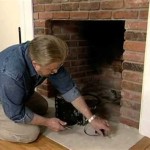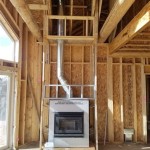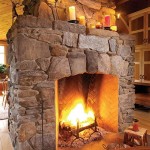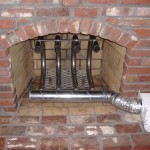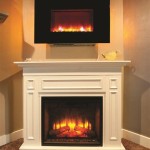The article should not include any advertising or promotion of anything.
Antique Mahogany Fireplace Mantel: A Timeless Statement of Elegance
An antique mahogany fireplace mantel represents more than just a functional component of a home; it embodies a rich history, exquisite craftsmanship, and an enduring aesthetic appeal. These mantels, often dating back to the 18th, 19th, and early 20th centuries, served as focal points in grand estates and modest homes alike, reflecting the prevailing design sensibilities and the social status of their owners. The enduring value of antique mahogany fireplace mantels lies not only in their age and rarity but also in their ability to infuse a space with character, warmth, and a touch of historical significance.
Mahogany, prized for its density, durability, and rich reddish-brown hue, was a preferred material for furniture and architectural details during these periods. Its ability to be finely carved and polished made it ideal for crafting intricate designs and elaborate ornamentation, which are characteristic of many antique fireplace mantels. Understanding the historical context, the distinguishing characteristics of mahogany, and the factors that contribute to the value of these pieces is crucial for both collectors and those seeking to enhance their homes with a piece of history.
Identifying Authentic Antique Mahogany
Distinguishing an authentic antique mahogany fireplace mantel from a reproduction or a piece made of another wood species requires careful observation and attention to detail. Mahogany possesses unique characteristics that set it apart from other hardwoods. One of the primary indicators is the wood's grain pattern. True mahogany exhibits a tight, straight grain, although variations such as ribbon-stripe or mottled figures can occur, adding to its aesthetic appeal. The color of the wood is also a key identifier. Antique mahogany typically deepens and matures over time, developing a rich, red-brown patina that is difficult to replicate artificially.
Furthermore, the construction techniques employed in crafting the mantel can provide clues about its age and authenticity. Hand-carved details, dovetail joints, and the presence of original hardware are all indicative of older pieces. The use of power tools, such as routers and sanders, which were not widely available until the 20th century, would suggest a more recent manufacture. Close examination of the joinery methods, the style of carving, and the presence of any repairs or alterations can provide valuable insights into the mantel's history and provenance.
The finish on the mantel can also offer clues about its age. Original finishes, such as shellac or varnish, often exhibit a characteristic "alligatoring" effect, where the surface develops a pattern of fine cracks due to age and environmental factors. The presence of multiple layers of paint or varnish, or the use of modern polyurethane finishes, may indicate that the mantel has been refinished at some point in its history. While refinishing can sometimes enhance the appearance of a mantel, it can also detract from its value, particularly if done poorly or if it obscures original details.
Consulting with a qualified antique appraiser or furniture expert can provide invaluable assistance in determining the authenticity and value of an antique mahogany fireplace mantel. These professionals possess the knowledge and experience necessary to accurately assess the age, provenance, and condition of a piece, and can provide guidance on its proper care and restoration.
Styles and Designs of Antique Mahogany Fireplace Mantels
Antique mahogany fireplace mantels reflect a diverse range of styles and designs, influenced by the prevailing architectural trends and artistic movements of their respective periods. From the ornate and elaborate carvings of the Victorian era to the clean lines and geometric patterns of the Art Deco period, each style offers a unique aesthetic appeal and historical significance.
Georgian mantels, dating from the 18th century, are characterized by their symmetrical proportions, classical motifs, and restrained ornamentation. Common features include fluted pilasters, dentil moldings, and carved swags or garlands. These mantels often reflect the influence of classical architecture and are typically found in more formal settings.
Victorian mantels, popular during the 19th century, are known for their elaborate carvings, intricate details, and use of rich, dark woods. Common motifs include floral patterns, scrollwork, and mythological figures. These mantels often reflect the opulence and grandeur of the Victorian era and are typically found in larger homes and estates.
Edwardian mantels, popular in the early 20th century, represent a transition from the ornate styles of the Victorian era to the more streamlined and simplified designs of the Art Deco period. These mantels often feature a combination of classical and modern elements, with clean lines, geometric patterns, and restrained ornamentation. They often incorporate elements of the Arts and Crafts movement, emphasizing handcrafted details and natural materials.
Art Deco mantels, popular in the 1920s and 1930s, are characterized by their sleek lines, geometric shapes, and use of exotic materials. Common motifs include stylized flowers, sunbursts, and geometric patterns. These mantels often reflect the machine-age aesthetic of the Art Deco period and are typically found in modern homes and apartments.
The style and design of an antique mahogany fireplace mantel can significantly impact its value and desirability. Rare or unusual styles, or those that are particularly well-preserved or historically significant, tend to command higher prices in the antique market.
Factors Influencing the Value of Antique Mahogany Mantels
The value of an antique mahogany fireplace mantel is determined by a complex interplay of factors, including its age, condition, rarity, provenance, and aesthetic appeal. Understanding these factors is crucial for both collectors and those seeking to purchase or sell these pieces.
Age is a primary determinant of value. Generally, older mantels, particularly those dating from the 18th or early 19th centuries, tend to be more valuable than those from later periods. This is due to their relative scarcity and the fact that they represent a more significant piece of history.
Condition is another critical factor. Mantels in excellent condition, with minimal damage or repairs, are generally worth more than those that are heavily damaged or have undergone extensive restoration. However, it is important to note that some degree of wear and tear is to be expected in antique pieces, and a certain amount of patina can actually enhance their character and value.
Rarity also plays a significant role in determining value. Mantels that are rare or unusual in terms of their style, design, or materials tend to be more valuable than those that are more common. For example, mantels made from particularly fine-grained mahogany or those featuring unique or unusual carvings may command higher prices.
Provenance, or the history of ownership, can also affect the value of an antique mantel. Mantels that can be traced back to a specific historical figure or event, or those that have been featured in notable collections, may be more valuable than those with unknown origins.
Finally, aesthetic appeal is a subjective but important factor. Mantels that are visually appealing and well-proportioned tend to be more desirable than those that are unattractive or poorly designed. The overall aesthetic of the mantel, including its style, color, and ornamentation, can significantly impact its value.
It is important to note that the antique market is subject to fluctuations based on prevailing trends and economic conditions. Consulting with a qualified antique appraiser or furniture expert can provide valuable insights into the current market value of an antique mahogany fireplace mantel.
The preservation and care of an antique mahogany fireplace mantel are essential for maintaining its value and ensuring its longevity. Regular cleaning with a soft cloth and gentle furniture polish can help to protect the wood from dust and dirt. Avoiding exposure to direct sunlight and extreme temperatures can prevent the wood from drying out or cracking. Professional restoration services should be sought for any significant repairs or refinishing projects.
In conclusion, acquiring and owning an antique mahogany fireplace mantel is a rewarding experience, offering a tangible connection to the past and a unique opportunity to enhance the beauty and character of a home. Understanding the history, characteristics, and value of these pieces is crucial for making informed decisions and ensuring their proper care and preservation for generations to come.

Antique 1890 S Carved Mahogany Fireplace Mantel Mantels

Mahogany Baroque Fireplace Overmantel Westland London

Antique Mahogany Mantel With Lion Heads Wood

1890 S Mahogany Fireplace Mantle W Bevelled Glass Southwest Spirit Antiques Certified Appraisals

Antique Mahogany Fireplace Mantel Surround With Arch Top Fl Desi Governor S Architectural Antiques
Reclaimed Antique Mahogany Wood Fireplace Surround E A Reclamation

Antique Mahogany Fireplace Mantel With Green Marble Top Chairish

Antique Mahogany Neo Classical Georgian Fireplace Mantel Mantels Fireplaces Designs

Mahogany Fireplace Mantel And Trumeau Wood

Antique Mahogany Fireplace Mantel Surround With Arch Top Fl Desi Governor S Architectural Antiques
Related Posts

